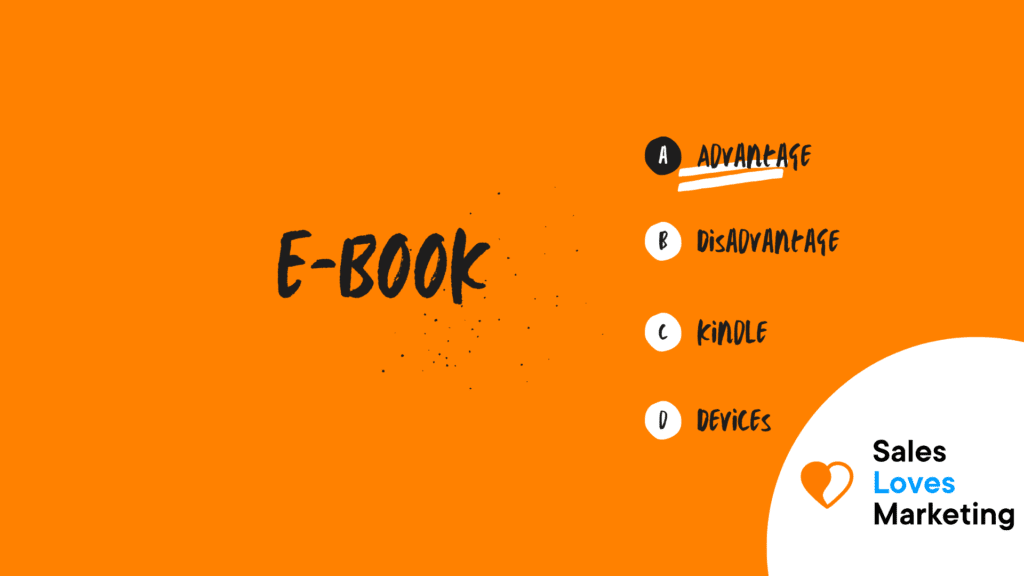What is an eBook?
An electronic book (eBook or e-Book) is a text presented in digital format that can be viewed on a computer screen or electronic device.
There are various print book genres that are available as eBooks that can contain only text or include audio, video, or hyperlinks.
In marketing, this format is widely used to attract visitors and achieve conversions.
How does eBook work?
As mentioned above, the e-Book allows one to read electronic books on a digital device with a screen.
Now, this type of device has storage memory similar to that of personal computers, which gives them the ability to accommodate many books while occupying the same physical space as a single paper book.
The type of screen that ebooks use is flat, thin, and can even be more or less flexible depending on the device.
To see the characters in a similar way to a paper book, a technology called “electronic ink” is used, which has no light, does not flicker, or has reflections to notto tire the eyes and can be read in outdoor light. Additionally, if the user requires it, the typography’s size and the contrast of light can be adjusted.
The eBooks come in different formats such as: PDF, HTML , TXT, LRF, EPUB, MOBI, PRC, FB2, ,etc.
Accessing eBooks is very easy. They can be obtained from free sources such as Project Gutenberg, which offers more than 50,000 titles to choose from, and they can also be purchased in different stores for a lower cost than paper books.
Devices to read eBooks
Some of the most popular digital devices for reading electronic books or eBooks are the following:
- Personal computers.
- Tablets.
- Smartphones.
- Ereader (electronic reader), is a device exclusively for reading and storing books.
Among the most popular are:
- Kindle from Amazon.
- Kobo from Rakuten.
- Nook from Barnes & Noble.
Related Reading; The Best Marketing Books
What are the advantages and disadvantages of an eBook?
Advantages
- Ecology. Helps the environment as no paper is needed for its use.
- Speed: e-Books can be downloaded quickly.
- Easy to carry: a large number of books can be housed in a single device.
- Interactive: allow readers to highlight, bookmark, take notes or get additional information through links.
- Personalization: the size, font, and lighting can be adapted to suit all tastes.
- Open market: By not going through the publishing process, it can reach a wider audience.
- Availability: editions are not sold out.
- Additional: apart from the text, e-books can have add-ons such as dictionaries or others.
Disadvantages
- They are only used through electronic devices: without one of them, eBooks cannot be visualized.
- They do not have a fixed page numbering: as the typography can be adjusted, it cannot show a fixed page number.
- They require prior induction: although they are easy to handle, it is necessary to know how to access the information, especially nowadays when there are different types of devices and software.
- The author cannot stamp his physical signature on them: nor can he make a physical dedication to the reader.
- They are impersonal: because they cannot be touched, smelled, heard how their pages sound when leafing through them, or evoke memories that could be generated as for example when smelling an old book from childhood.
